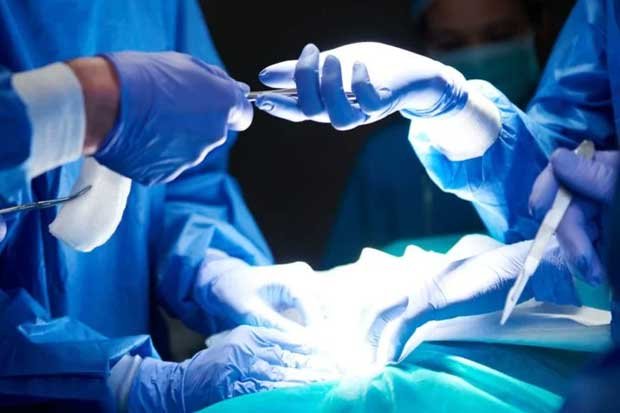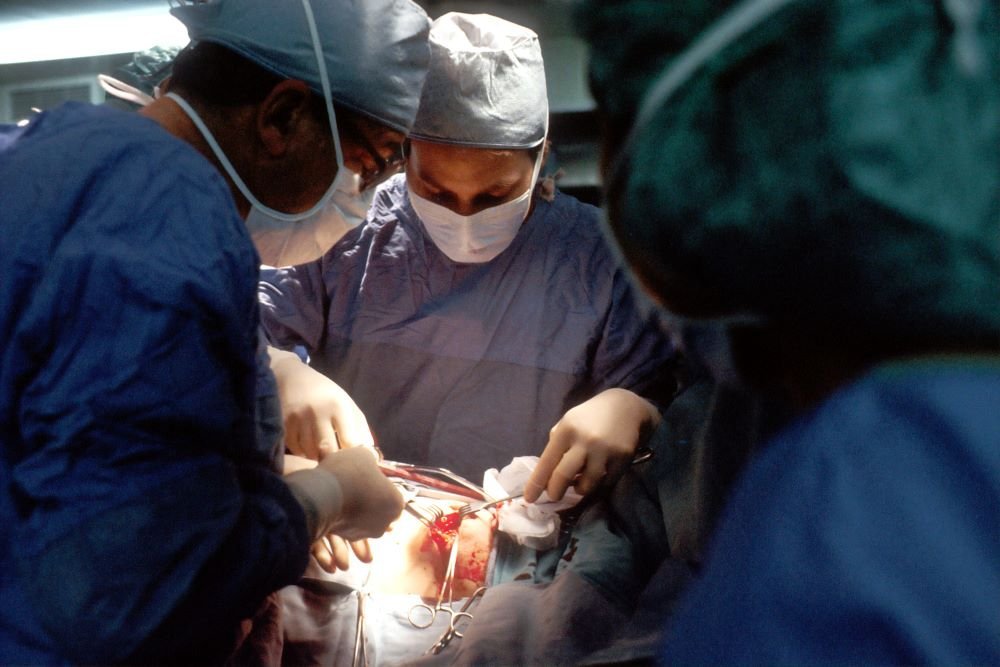The specific details of your surgery will depend on various factors, including your cancer stage and overall health. It’s important to consult with a medical professional for personalised advice. However, here are some aspects that are often involved in lung cancer surgery:
1. Pre-operative preparations: You may need to undergo tests and assessments before the surgery to ensure you’re in the best possible condition for the procedure. This may include blood tests, imaging scans, and discussions with your medical team. Generally speaking, every patient who is a candidate for lung cancer surgery will undergo, as a minimum, a staging CT scan of the chest, a PET/CT scan and lung function test.
One could imagine a CT as a black-and-white photograph showing the anatomy inside the chest and the extension of the cancer. The PET/CT is like a colour photograph: it gives anatomical details but also an indication of the activity of the lesion and its potential spread to other organs or lymph nodes. A lung function test is needed to determine whether the residual lung is enough to breathe without difficulties. Patients who damaged their lungs from many years of smoking might not have enough lung tissue left to breathe without oxygen support.
There are other tests that can be done based on individual needs, such as heart scans, complex breathing test, CT-guided biopsies or bronchoscopies. The latter is when a small camera is inserted through the windpipe to look at the inside and potential biopsy lymph nodes surrounding it to check how advanced a cancer is.
2. Anesthesia: During the surgery, you’ll undergo general anesthesia, which means you’ll be unconscious and pain-free throughout the procedure. A special tube put through the mouth is used to deflate the lung that is going to be operated on.
3. Incision placement: The surgeon will make an incision in the chest to access the lungs. The size and location of the incision will depend on the type of surgery being performed. It varies from just a 3cm to a 10inch cut for large cancers involving vital structures.
4. Tumor removal: The surgeon will strive to remove as much of the cancerous tissue as possible. This may involve removing the tumor itself, nearby lymph nodes, or parts of the affected lung.
5. Potential complications: Like any surgical procedure, lung cancer surgery comes with risks. Possible complications can include infection, bleeding, adverse reactions to anesthesia, damage to surrounding organs, prolonged air leak or even death.
6. Recovery time: After the operation, you’ll be taken to a recovery area and monitored for any complications. The length of your hospital stay will depend on the extent of the surgery and how well you heal. You can expect to have some pain and discomfort, but medications will be provided to manage it.
7. Rehabilitation: In some cases, rehabilitation may be necessary to help you regain lung function and overall physical strength. This could involve exercises, breathing techniques, and support from physiotherapists or respiratory therapists.
It’s crucial to have a detailed discussion with your healthcare team to thoroughly understand the specifics of your surgery, its potential outcomes, and any post-operative care that may be necessary.
Is it necessary to have surgery for lung cancer?
Patients always have the final say on what treatment is best for them. The role of healthcare professionals is to counsel patients, but they cannot choose for them. Generally speaking, surgery is considered the gold standard for early-stage lung cancer, which is the best treatment likely to be potentially curative. For patients without any significant medical problems who looked after themselves, surgery is generally very safe with excellent outcomes. The majority of operations are performed by keyhole approach.
What are the alternatives to lung cancer surgery?
There are several alternatives to lung cancer surgery, depending on the stage and type of lung cancer. Here are some common alternatives:
1. Radiation Therapy: This involves using high-energy radiation to kill cancer cells. It can be used as the primary treatment or in combination with surgery and/or chemotherapy.
2. Chemotherapy: Anti-cancer drugs are used to kill cancer cells throughout the body. It may be used before surgery to shrink tumors, after surgery to kill remaining cancer cells, or as the primary treatment for inoperable lung cancer.
3. Targeted Therapy: These drugs target specific genetic mutations or proteins that help cancer cells grow. They may be used when people have specific mutations in their tumors.
4. Immunotherapy: This treatment helps the body’s immune system to recognize and attack cancer cells. It can be effective in certain types of advanced lung cancer.
5. Radiofrequency Ablation: This involves using high-energy radio waves to kill cancer cells. It is often used for small lung tumors and may be a treatment option for those who cannot undergo surgery.
6. Stereotactic Body Radiotherapy (SBRT): Highly focused radiation beams are used to deliver high doses of radiation to small tumors in a few treatment sessions.
It is important to consult with a medical professional who can assess your specific situation and determine the most suitable treatment options for you.
Patient guide for lung cancer surgery
Lung cancer surgery is a significant procedure that requires careful preparation, understanding of the surgical process, and thorough postoperative care. Here is a guide for UK patients to help navigate this journey:
Before Surgery:
- Preoperative Assessment: Your healthcare team will conduct a series of tests, including blood tests, imaging scans, and pulmonary function tests, to assess your overall health and the extent of the cancer.
- Medical History and Medication: Ensure that your surgeon is aware of your complete medical history and current medications. Some medications may need to be adjusted or paused before surgery.
- Lifestyle Adjustments: If you smoke, quitting before surgery is crucial to improve your recovery and lung function. A healthy diet and regular light exercise can also help prepare your body for surgery.
During Surgery:
- Surgical Procedure: The type of surgery will depend on the size, location, and stage of the cancer. Common procedures include lobectomy (removal of a lung lobe), pneumonectomy (removal of an entire lung), and wedge resection (removal of a small part of the lung).
- Anesthesia: You will receive general anesthesia, ensuring you are asleep and pain-free during the surgery.
- Duration: The surgery can take several hours, depending on its complexity and the specific procedures performed.
After Surgery:
- Recovery Room: Post-surgery, you will be monitored in the recovery room before being moved to a regular hospital ward. Pain management and monitoring for any immediate complications are priorities.
- Hospital Stay: Expect to stay in the hospital for about 5-7 days, although this can vary based on your individual recovery. Your medical team will help manage pain, prevent infections, and monitor lung function.
- Postoperative Care: Follow your surgeon’s advice on wound care, activity levels, and breathing exercises. Physiotherapy may be recommended to aid recovery and improve lung function.
- Follow-Up Appointments: Regular follow-up appointments are essential to monitor your recovery and address any concerns. Your healthcare team will also discuss further treatment options if needed.
By understanding these steps and following medical advice, UK patients can navigate lung cancer surgery with greater confidence and achieve better outcomes.






